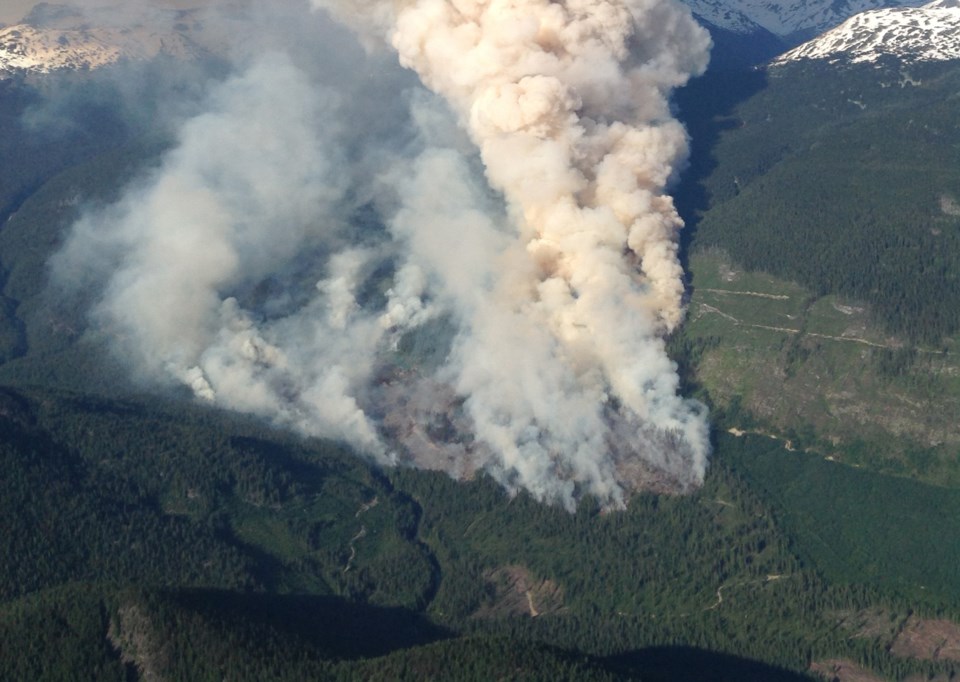In what was a dry summer of 2015, area fire crews started work in mid-May, but this year, they’ve been out since April, says Rob Dombowsky.
Dombowsky, a forest protection officer for the B.C. Wildfire Service, and other staff were on hand Saturday at the Sea to Sky Gondola as part of the Summit Series of presentations on forest issues. He and the Pemberton Fire Zone crew cover a large area that includes the Sea to Sky Corridor.
At present, the fire crews are battling flames in other parts of B.C. as well as Alberta and farther east. “One of our local units crews left last week and went to Ontario,” Dombowsky said.
He expects they will be home and needed for fires in this area, especially if the dry spring becomes another dry summer.
At the Summit Series event, the Wildfire Service provided a range of information, such as how residents can reduce the risk of fire catching and spreading around their homes, fire-resistant plants, campfires, backyard and industrial burning and the province’s FireSmart program.
He spoke with visitors about risks in the Squamish area and what can be done to help cut down risks in interface zones, as well as continuing problems such as campfires being left burning by recreational users.
While always a concern, wildfires become an even bigger threat when conditions are hot and dry. Dombowsky said last year, crews were first deployed in the area May 16.
“Last year was an exception to the rule,” he said of the dry conditions.
By mid-June, with fires like the Elaho and later Boulder Creek spreading, all crews were fighting fires at home rather than helping in other parts of the province or country.
This year, with little precipitation again, there is a need to be more vigilant in preventing fires in interface zones, especially as crews have already been attending fires. The concern is magnified by the long-term build-up of fuel on forest floors, which was a major factor in the Elaho situation, Dombowsky said.
“The forest is beautiful, but it’s a really dangerous place,” he said. “It’s unbelievable how much stuff has fallen down…. Mother Nature used to reduce it on a regular basis.”
The Wildfire Service has also been working with communities through the FireSmart program to educate residents living in interface zones. They can employ simple measures like thinning trees close to properties or moving fuel sources such as woodpiles.
“You space, you thin and reduce all that hazardous material,” Dombowsky told a visitor at the event Saturday.
He also mentioned other measures such as replacing flammable shrubs like juniper with more fire-resistant plants such as blueberry and huckleberry.
One of his main frustrations though comes from visitors, specifically when he has to send crews to mop up after campers who have not put out fires. This, he says, stretches resources and also poses a threat to crew members.
“The safety of the responder is never taken out of the picture,” he said.
The Summit Series offers B.C. Wildfire Service an opportunity to provide some tips to the public about how to cut down on the risks.
Dombowsky works closely with district manager Dave Southam of the Ministry of Forest, Lands and Natural Resources and gives credit to him for getting things organized for the Summit Series.
Other upcoming Summit Series talks include presentations on wildlife, timber sales and water management. For info see www.seatoskygondola.com under Events.



